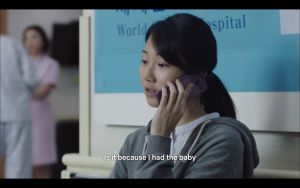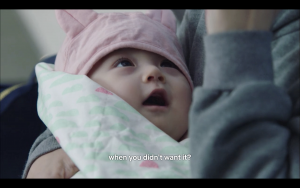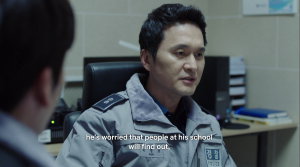Contemporary Views on Pornography in South Korea
Lucius Kang
21903142
DEC. 5, 2018
Word count: 3299 words
INTRODUCTION
Entering the new millennium era, existence and importance of Sexual Explicit Material (SEM) are becoming increasingly common and change is in need more than ever, and adolescents residing in an old fashioned country like South Korea, are no exceptions (Zurcher 2017). South Korea’s old fashioned and non-progressive attitude towards pornography reduces the chances of creating a society that is safe to love. In the paper, in discussion of SEM, we are focusing on pornography, also content of sexual materials can be assumed as discussion of pornography.
The reason why we state South Korea as an old fashioned country that remains conservative is that in Korea, there are number of topics that are refrained for discussion in the society even to this day. Some of these topics include, use of drugs, gambling, and pornography consumption. It is interesting to take note of the fact that the commonality of these 3 examples of morally forbidden topics in Korea is that they are all prohibited in Korea. The Constitutional Law of Korea and the Korean government forbids SEM and this is shown by the Korean government making an attempt to even regulate SEM in social networking site, for example Tumblr (Cho 2017). Perhaps the reason is because it is prohibited in the country, minor population in South Korea are open to propose the topic for discussion (Zurcher 2017) neither at outside with friends nor in inside with family members. There are more consequences of illegalization of pornography and will touch more on those possibilities later in the paper.
Live is a 2018 South Korean television series that tells stories of police officers in South Korea. We found our phenomena watching an episode from Live. In episode 11, as Oh Yang-chon, a police man and a father of a family, walks out speechless from an intense conversation with his son, all of sudden, he finds something to berate and warns his son “if I catch you watching porn one more time, I’ll beat the crap out of you” (ep. 11, 1:08:00 ~ 1:08:08). Although it was short and no huge emphasis was on the scene, the scene caught another student in his youth because rise of pornography exposure and standardization of pornography is something we have gone through growing up as well.
The father’s reaction and his situation are equally as informative as the quote itself. Few seconds before the quote, the two family members were having an argument, and the quote was spoken at a moment the father ended up speechless because how the son proposed an argument, there were no good counterargument. Not only the timing, but after the quote, Oh Yang-chon also quickly left the site as if he was fleeing the area. Although this was a quick scene, we found this interesting to explore and in our opinion, these proposed many evidences of problems in contemporary views on pornography in South Korea.
The quote from episode 11 in Live, suggests the viewers three notable areas of problems of image displayed on pornography in South Korea. Action of the father figure Oh Yang-chon fleeing the site of discussion portrays problems of parenting on pornography in the country. And because Oh Yang-chon said the quote at the moment he found himself speechless, this implies that the intention of the quote was to add a comment on the son’s wrongdoings. This hints us how SEM are displayed and how adolescents in South Korea are educated about pornography. Lastly the quote itself clearly shows the culture in the society and exemplifies a possible consequence of not obeying the cultural norm.
The main purpose of this paper is to explore the modern views on pornography and discuss what and how the views are created, and why the views are either beneficial or not for the adolescent living in the country, with emphasis on three areas: parenting, education and culture of South Korea.
PARENTING
With increase of normality of pornography among youth, parenting is the most important and most influential factor shaping attitudes of adolescents. In the life of an adolescent, there are limited number of relationships that affect their opinion and mindset. We think the critical relationships are parents, teachers and friends. However teachers may not be suitable in the discussion for influence on a Korean student due to low chance of ending up with the same teacher two or more consecutive years is unlikely, especially in a small country with concentrated population like South Korea. Friends, as well as teachers, are not as likely as parents to affect an adolescent’s behaviour since there are many peers around an adolescent in Korea and it makes sense to assume low chances of maintaining one long-lasting friendship enough to have effect on the individual. Accounting for limitations of the two relationships, parent-child relationship is the deciding factor for an adolescent’s viewpoint on a topic, in our case on pornography.
Then the question becomes what do parents think of pornography? It is not difficult to assume that parents, in particular to traditional and old fashioned country like South Korea, do not favor the existence of pornography for their offspring. A researcher named Jessica Zurcher organized a study to obtain information about pornography in parental perspectives. Even though rate of exposure of pornography is increasing and age of first exposure is decreasing, some parents still believe “the perception that pornography is a forbidden topic to discuss” (Zurcher 2017). On top of this, there are other parents that wish to not discuss the topic because they felt pressured to address the topic of pornography with their children subsequent to the study. On the other hand, there are also groups of parents who acknowledged the increase of exposure and normality of pornography, but which many of them share the “not my kid” attitude (Zurcher 2017). Overall fear, discomfort and lack of sexual communication are shown among the parents and their child. Because this exampled study was conducted in a country that legalized SEM and online pornography, we are able to retrieve some information of how parents in a country that illegalized SEM and pornography content, view on the topic.
The Korean drama Live could also provide hints for us about parent-child sexual communication level in South Korea. In the short encounter on the topic, the father Oh Yang-chon and his son do not make eye contact while on the topic (ep. 11, 1:08:00 ~ 1:08:10) and the way the father brought up the topic imply that the very moment is the first time discussing on pornography. We should also note that the son is almost old enough to enter high school. This brings another significant factor in determining an adolescent’s behaviour. Not only on what is projected but also when an idea is projected is equally as important. South Korea has now become a society that 80.3% of male students have watched porn, also of which 69.2% of those had first encountered porn in late elementary school or early secondary school years (Kim and Lee 2010).
Assuming that many and majority of parents in South Korea have negative views on pornography, we enquire why the perspectives of parents matter for their adolescents. Watching internet pornography can lead to increase in sexual impulsivity (Kim and Lee 2010). This finding can only contribute to support the movement of banning SEM; however, we are aware of the fact that the rate of exposure of pornography and normality of pornography are also increasing. Nevertheless, as parent-child communication increases, rate of internet pornography decreases (Kim and Lee 2010). Although watching internet SEM positively correlates with sexual impulsivity, parental communication with the child negatively correlates with usage of internet SEM. Hence, parent-child communication is important and is crucial enough to guide young adolescents to develop their ability to categorize on what is right and wrong.
In addition to non-existence in parent-child communication, disruptive parent-child communication also drives negative effects on the youth. As there are parents who initially wishes not to engage in topic of pornography with their child, some parents react with emotions such as “anger, horrified and explosion” (Zurcher 2017). Their parenting may become more strict, and subsequently deliver more harsh punishments on pornography consumptions. However, suppressive and strict parenting could increase the probability of males engaging in more coercive sexual practices (Simons 2012). This is meaningful for the parents in South Korea in particular, since Korea is one of the countries that practice physical punishment in households (Son et al 2017). It is more than urgent for the people in South Korea, especially the parents, to be mindful of the analysis. Increase rate of males in coercive sexual practices also generates increase victimization of females in coercive sexual practices (Simons 2012), and this is just one example of importance of appropriate parenting. This kind of parenting is clearly demonstrated in Live also in the scene by the father Oh. He directly states that future consequence is whipping as the punishment once the son is caught in action (ep. 11, 1:08:00 ~ 1:08:10).
As clearly illustrated in the scene of Live, the contemporary Korean society is highly exposed to pornography. Simply prohibiting pornography to reduce wrong idea on sexual intercourse has now become ineffective. In fact, parenting is more in need than in past since “Even with exposure to SEM, if an adolescent maintains a healthy communicative environment with the parent, probability decreases for chances of deviational sexual impulsivity, as well as dangerous sexual behaviour” (Kim and Lee 2010).
EDUCATION
Before fixing the problem, one must acknowledge the presence of the problem. In South Korea, the ministry of education remains ignorant on increase in normality of pornography usage among adolescents, and the need for proper education that allow adolescents to fully understand the reason of existence of pornography in the first place.
Improper education on SEM can easily generate improper awareness on SEM. People in this modern era, especially younger generations whom grew up with technology surrounding them, can retrieve information online with ease. No exception is given even in a country that prohibits pornography. And when young users encounter those sexual contents online, whether first time or not, it is more likely that they will start to believe what they are seeing. Perhaps if the first sexual videos encountered incorporate violence and threat, it is more likely that the viewer treat violence and threat as part of sexual intercourse. In fact, paraphilic SEM users were found to overlap between pornography and sexual myths, as well as marked higher average score on the sexual compulsiveness scale (Štulhofer et al 2008). If one was accustomed to paraphilic sexual contents, we can anticipate the one to have higher level of sexual boredom. These are some of impacts of lack of proper education that leads to adolescents to ‘believe what you are seeing’. To prevent any more effects like these, the South Korean government “need to improvise a method that incorporates contents that would increase media literacy and assist young people in critical interpretation of pornographic imagery” (Štulhofer et al 2008).
While improper education lead to alternative genre like paraphilic sexual content, it could also impact an individual on his/her ability to deduce his/her own right and wrong. Without proper sexual education, an adolescent’s logic could adapt to other negative contents and become impaired to reason rationally on their own standard. The problem arises on surface as youth sexting, in addition to problem of increase in sexual impulsivity, has also become significant in the online society in South Korea (Song 2018). Rate of increase of young Koreans taking part in sexting community is disastrous demonstration of lack and the need of sexual education, not even the foundational education about importance on themselves.
Since online pornography are widely and conveniently available, instead of putting effort to prevent confrontation, we can help shape SEM as a learning module for the adolescents. Although some of SEM engage wrongdoings such as child pornography, rape, or violence, teachers in the country and the ministry of education can utilize pornography videos to teach “awareness and acceptance that sex can be pleasurable” (McKee 2010). After all, what pornography consumers desire on consumption is to feel relaxed and enjoy the pleasure about sex. Nevertheless there are flaws on using pornography as educational purposes. Pornography is excellent to teach the beauty of sexual intercourse and understand their attitudes towards sexuality. However, pornography fails to teach about safety about sex. Sexual education in South Korea is still insufficient, not solely because of the ministry of education of Korea but also with tendency of many adults in Korea to avoid the topic, which includes group of teachers. Therefore, the general public and the ministry of education should focus their attention to discover a new solution to address missing components of SEM for educational purposes, instead of simply prohibiting pornography.
Rather than simply punishing an adolescent on engagement in online SEM, people of South Korea, particularly people associated with the ministry of education, should assort pros and cons of pornography. If properly used, this model can infer adolescents to enhance both an understanding of the beauty of sexual intercourse and an awareness of safety in reality.
CULTURE
Aside from parenting and education, we suspect culture to account vast remaining of effects on adolescents’ view and interpretation of pornography. We will discuss cultural influences in three separate categories. One, being relationship with peers and second, societal problems in modern trend for students and lastly, South Korea being a country that practices collectivism.
“Like attracts like” (Ball 2012) is a perfect analogy for peer relationships among adolescents. A peer relationship is built when two or more share common ideas and the relationship strengthens when the peers share common interest. South Korea is known as one of collectivistic cultures (Morling et al 2008); the trait is also prevalent in schools. Small minority, particularly in youth than old, feel fine alone, outside of a peer circle (Abou-ezzeddine et al 2007). It is difficult to adapt to a new way of thinking, yet it is much easier to adapt to a new habit. Consequently, adolescents become adapted to surrounding peers’ habits. In a discussion of pornography, adolescents who befriend delinquent boys (also known as Bi-hang-cheong-so-nyun) are more likely and are easily exposed to SEM (Yang 2016). Not only this, an adolescent who lacks in bonding ability with other peers is more likely to remain exposed on pornography (Yang 2016). This behaviour can be interpreted as an adolescent’s own way of desire to fulfill the sense of belonging.
Similar to adolescents approaching pornography to fulfil their minimum human interactions, pornography is also a way of escape for the system of modern Korean society. For the people in South Korea, the most important event as students is the college entrance exam. Focus on the exam has shifted to its maximum severity in the modern society, and such culture minimizes other realistic interactions such as hanging out with friends. Consequently, adolescents return to the online world and online pornography to find a pleasure in their lives (Yang 2016).
Other than peer cultures in an adolescent’s life, the societal culture, collectivistic culture carry effects on child’s interpretation of pornography. A collectivistic culture Widely known collectivistic country, South Korea, practices a trend to “abide by the norms and conform to community standard” (Lo et al 2010), which is to disapprove internet pornography, along with pre- and extra- martial sex. South Korea has long history of sacrifices of sexual pleasure: cases also referred to as wianbu (Lie 1995). Wianbu had to unethically serve Japanese, American, and even Korean soldiers during and after the Japanese colonial era (Lie 1995). We think that one of theoretical reason as to why South Korea still tries to regulate porn and sex industry may be to express country’s recognition of the Wianbu and to put on mourning for them nationally. As demonstrated above, South Koreans practicing collectivism can result as either increase in pornography to behave collectively with others or decrease in pornography to conform with the norm that internet pornography is detrimental.
South Korea is a collective society that have sympathy for its history on sexual intercourse, and is more likely to disapprove internet pornography to better conform with surrounding culture. Nevertheless, relationships among the people in the country have adapted to isolation and online interactions. Hence, culture displays how people in South Korea still need therefore search for online pornography.
DISCUSSION
This paper explores the phenomena of modern views on pornography in South Korea by examining some of causes and effects of SEM exposure. Three areas that are examined are parenting, education and cultural influences.
Findings of this paper can be summarized as follows. First, pornography exposure has increased and normality of pornography has also increased in Korea. Second, negative and ignorant parenting can make child to become unfavourable in relationships due to exposure to pornography. Third, adequate parenting reduces the possibility of child become someone not favored as stated in the second finding. Fourth, without proper sexual education, chances of adapting not favored characteristics in paraphilic SEM increases significantly. Fifth, with addition of few awareness, pornography exposure can become one of sexual education. Sixth, number of humane relationships negatively correlates to probability of exposure on pornography.
The cultural aspect of the examination is used to determine the likeliness of pornography consumption. Traditionally, the nation is collectivistic and hence is assumed to disapprove SEM along with others. Nonetheless, South Korean society deprives more human relationships as time elapse (Yang 2016). This results in increase of desire among adolescents to find elsewhere to fulfil the lacking comfort, and urgently capture any chances to fit in, which often requires share of common interest like pornography.
The educational aspect of the examination states to understand the capability of pornography as an educational purpose. It is clear that sexual education is essential to comprehend sexual activity appropriately to reduce likelihood of destructive behaviours. Destructive behaviours include sexting, sexual compulsivity and all others that harms safety of oneself. One idea we may suggest is that use of pornography can be beneficial for adolescents as it already portrays that “sex can be pleasurable” (McKee 2010). With address of few safety concerns, adolescents that are surrounded by exposures of pornography may better understand the beauty of love.
As it is the most influential factor of three areas of comparison, parenting proposes its role and its effects. With more than three quarters of students in Korea are engaged in pornography, it is also crucial to remember the positive correlation between sexual impulsivity and SEM. Not only are rate exposure to pornography increasing, but age of first exposure to SEM decrease. The society consists of more than half of adolescents to encounter pornography before junior year in middle school. Additionally, the fact that increase in parent-child communication connects to negative correlation with both the rate of SEM and paraphilic impulsivity is crucial. Because first exposure and rate of exposure is increasing and happening sooner, people in Korea, especially the adults and parents, need to begin to stop being ignorant and become open minded for change on views on pornography.
Even though it is significant that parenting is the most significant factor in shaping the perspective on online pornography, the remaining two areas contribute significantly to enquire the need for change in the Korean society. Live is a television series that reflects modern problems occurring in South Korea, and it provides insight on reality of contemporary parenting, as well as education and culture on pornography. In the drama, Oh Yang-chon’s reaction and attitude toward pornography is the old fashioned Korean. If people in South Korea start by acknowledging than to ignore, if they begin to explain than to punish younger generations unlike Oh Yang-chon, and if they initiate respect for another, we believe the South Korean society can become more safe, stable and trustworthy.
Bibliography
Abou-ezzeddine, Tania, Schwartz, David, Chang, Lei, Lee-Shin, Yoolim, Farver, JoAnn, Xu, Yiyuan. “Positive Peer Relationships and Risk of Victimization in Chinese and South Korean Children Peer Groups.” Social Development vol. 16, no. 1 (2007): 106-27.
Ball, Philip. “Like Attracts Like?” Nature, 2012. https://www.nature.com/news/like-attracts-like-
1.10698 (accessed 12/05/2018)
Cho, Mu-Hyun. “Tumblr Rejects Korea’s Porn Deletion Requests.” ZDNet. September 25, 2017.
https://www.zdnet.com/article/tumblr-rejects-koreas-porn-deletion-requests/ (accessed 12/05/2018).
Kim, Bo Hwa, and Lee Jung Yoon. “The Relationship between Adolescents Pornography Contact and Sexual Impulsivity: Moderating Effects of Self-control, Parents-Adolescents Communication and School Adjustment.” Korea Journal of Counseling 11, no. 3 (2010): 1221-236.
Lie, John. “The Transformation Of Sexual Work In 20Th-Century Korea.” Gender & Society 9, no. 3 (1995): 310-27.
Lo, Ven-Hwei, Clement Y.k. So, and Guoliang Zhang. “The Influence of Individualism and Collectivism on Internet Pornography Exposure, Sexual Attitudes, and Sexual Behavior among College Students.” Chinese Journal of Communication3, no. 1 (2010): 10-27.
McKee, Alan. (2010). “Does pornography harm young people?” Australian Journal of Communication, vol. 3, no. 1, (2010): 17-36.
Morling, Beth, and Marika Lamoreaux. “Measuring Culture Outside the Head: A Meta-Analysis of Individualism—Collectivism in Cultural Products.” Personality and Social Psychology Review, vol. 12, no. 3, 2008, pp. 199–221.
No Hee-kyung, writier. “Live” In Live, directed by Kim Kyu-Tae. TvN. 03/10/2018.
Simons, Leslie Gordon, Ronald L. Simons, Man-Kit Lei, and Tara E. Sutton. “Exposure to Harsh Parenting and Pornography as Explanations for Males’ Sexual Coercion and Females’ Sexual Victimization.” Violence and Victims 27, no. 3 (2012): 378-95.
Son, Heimi, Lee Young Ae, Ahn Dong Hyun, and Doan, Stacey N. “Maternal Understanding of Child Discipline and Maltreatment in the United States, South Korea, and Japan.” Children and Youth Services Review, vol. 82, (2017): 444-454.
Song, Juyoung, Tae Min Song, and Jin Ree Lee. “Stay Alert: Forecasting the Risks of Sexting in Korea Using Social Big Data.” Computers in Human Behavior 81 (2018): 294-302.
Štulhofer, Aleksandar, Vesna Buško, and Ivan Landripet. “Pornography, Sexual Socialization, and Satisfaction Among Young Men.” Archives of Sexual Behavior 39, no. 1 (2008): 168-78.
Yang, Sook-Ja. “The Effects of Parenting and Peers on Pornography Media Engagement.” The Journal of the Korea Contents Association 16, no. 8 (2016): 729-42.
Zurcher, Jessica D. “Exploring Descriptive Norms of Parent-child Communication about Pornography among Parents of Middle-schoolers in the US.” Journal of Children and Media 11, no. 4 (2017): 381-98.








